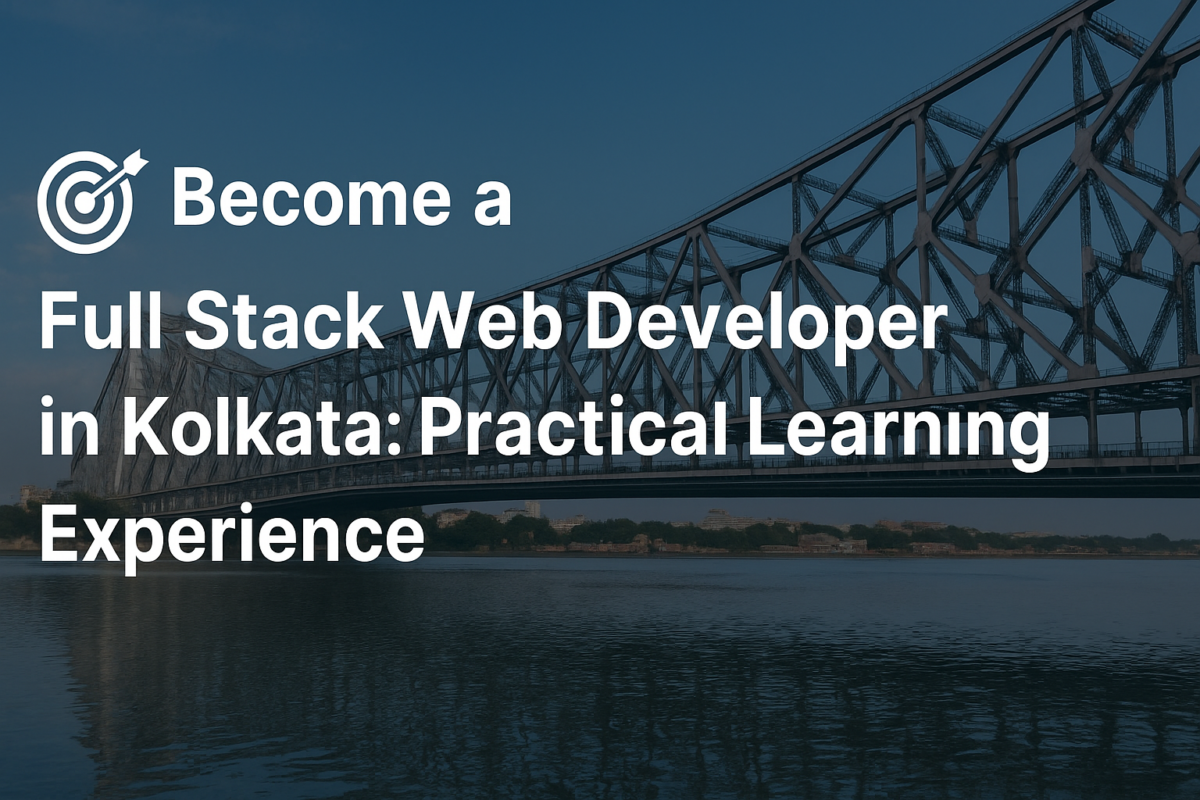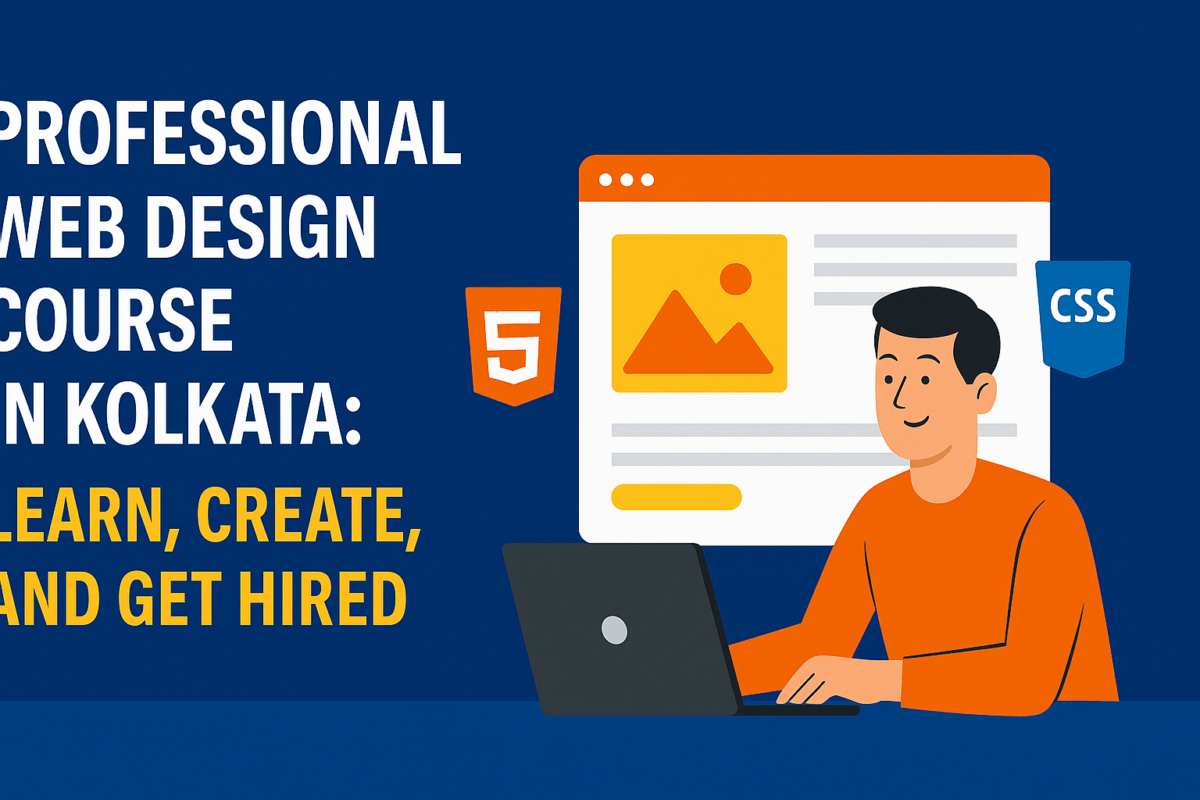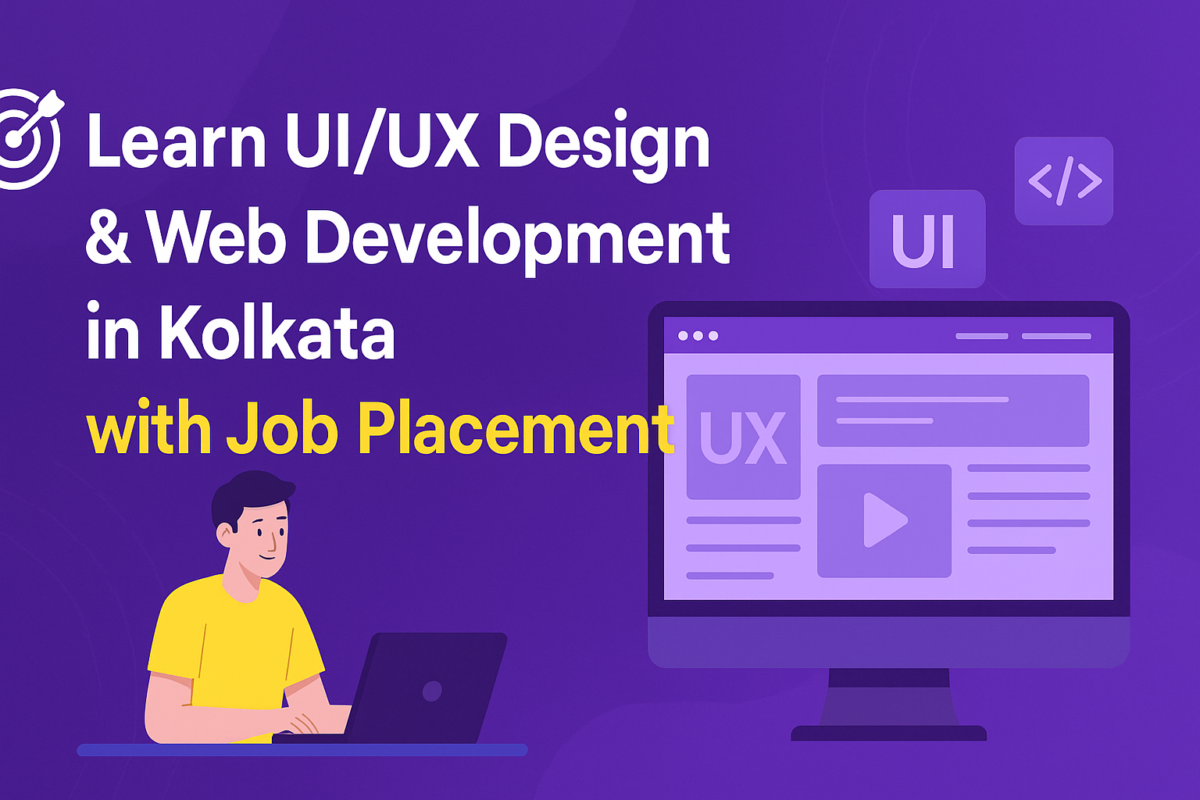📌 Intro
Are you ready to learn full stack web development in a way that goes beyond theory and dives deep into practical implementation? If you’re located in the cultural and tech-emerging city of Kolkata, this blog is your ultimate roadmap to success. Whether you’re a beginner eager to explore the digital landscape or a developer wanting to polish your skills, joining the best web development training in Kolkata can be your launchpad into a thriving tech career.
In today’s digital-first world, a web development course in India is no longer optional—it’s essential. Companies are actively seeking developers who can fluently manage both frontend and backend development, using modern tools like JavaScript, React, Node.js, and Tailwind CSS. What makes Kolkata unique is its growing community of tech enthusiasts, thriving startups, and affordable learning options—all wrapped in the city’s charm.
This comprehensive guide will explore the ten essential modules every full stack web developer should master in Kolkata, from handling dependencies and creating real-time chat applications to integrating APIs and ensuring accessibility. By the end of this blog, you’ll know exactly what to look for in a full stack development program and how practical training in Kolkata can accelerate your career.
🔹 Manage dependencies with npm and yarn.
Managing project dependencies is one of the first things every full stack developer must grasp. npm (Node Package Manager) and Yarn help you install, update, and maintain libraries and tools in your project with ease. During a web development course in India, you’ll often begin your journey with npm as it’s the default package manager for Node.js.
Both npm and Yarn allow you to lock package versions, manage scripts, and even cache dependencies for better performance. A practical course will teach you not just how to use them, but how to troubleshoot errors and optimize package loading.
🔹 Build and consume GraphQL APIs.
GraphQL has changed the way developers interact with APIs. Unlike REST, GraphQL lets you request only the data you need. In a frontend and backend development tutorial, learning to build and consume GraphQL APIs empowers you to create faster and more efficient applications.
You’ll learn to set up a GraphQL server, write queries and mutations, and use client libraries like Apollo to fetch data on the frontend. These skills are in high demand for JavaScript and React developer training programs.
🔹 Integrate social login with Google and Facebook.
Social login simplifies the sign-in process and improves user experience. Most modern applications provide the option to log in using Google or Facebook, reducing the friction of creating new accounts.
In the best web development training in Kolkata, practical projects will walk you through OAuth flows, token management, and securing your app against common authentication threats. By the end, you’ll be able to implement secure social login features using libraries like Passport.js and Firebase Auth.
🔹 Build dashboards using charting libraries.
Visualizing data is crucial for admin panels, performance monitoring tools, and user-facing analytics. Charting libraries like Chart.js, Recharts, or D3.js are commonly taught in JavaScript and React developer training programs.
You’ll learn to integrate real-time data with bar charts, pie charts, and line graphs, ensuring your dashboards are both beautiful and functional. These dashboards are perfect real-world applications that strengthen your frontend development capabilities.
🔹 Integrating third-party APIs like Google Maps.
Interacting with third-party APIs adds dynamic capabilities to your apps. In a practical web development course in India, you’ll work with APIs like Google Maps, OpenWeather, or Stripe to bring added functionality to your websites.
You’ll explore API keys, rate limits, authentication methods, and response handling to create smooth, interactive experiences. This training ensures that you’re not just building websites—you’re crafting complete user experiences.
🔹 Master Node.js for scalable backend development.
Backend scalability is where Node.js truly shines. It’s lightweight, fast, and ideal for building scalable server-side applications. A solid frontend and backend development tutorial will ensure you master Node.js fundamentals—routing, middleware, file systems, and databases.
You’ll learn how to connect Node.js with MongoDB, secure your APIs with JWTs, and manage sessions. Practical projects could include building e-commerce sites or content management systems.
🔹 Web accessibility standards and practices.
Accessibility is not a feature—it’s a necessity. Learning web accessibility standards and practices ensures your websites are usable by everyone, including people with disabilities. You’ll explore ARIA attributes, keyboard navigation, and semantic HTML to create inclusive designs.
Courses in Kolkata are increasingly emphasizing accessibility as part of comprehensive JavaScript and React developer training, making you stand out as a responsible and skilled developer.
🔹 WebSockets for real-time chat applications.
Want to build a real-time chat app like WhatsApp or Slack? You’ll need to work with WebSockets, which provide two-way communication between client and server. In a project-based web development course in India, you’ll build chat apps, real-time notifications, or live dashboards using libraries like Socket.io.
This topic not only teaches you event-driven architecture but also prepares you for roles in high-performance, real-time systems.
🔹 Boost your front-end with React.js fundamentals.
React.js is a must-have skill for any frontend developer. From component-based architecture to state management using Hooks and Redux, you’ll cover everything in a JavaScript and React developer training module.
By learning how to build reusable components and handle props, events, and lifecycle methods, you’ll be equipped to build interactive UIs and single-page applications that are fast and efficient.
🔹 Use Tailwind CSS to create beautiful UI faster.
Gone are the days of writing bulky CSS from scratch. Tailwind CSS is a utility-first framework that lets you design elegant UIs with minimal effort. During the best web development training in Kolkata, Tailwind is often introduced as a modern solution to speed up frontend development.
You’ll learn how to customize themes, implement responsive layouts, and integrate Tailwind with React or other frontend frameworks.
📌 Summary
To learn full stack web development, you need more than just tutorials—you need a roadmap filled with practical, hands-on experience. Enrolling in the best web development training in Kolkata allows you to build real-world applications, master modern tools like React, Node.js, and Tailwind CSS, and become job-ready.
With key modules covering frontend and backend development, accessibility, API integrations, and real-time systems, this approach goes far beyond theory. By choosing a skill-oriented web development course in India, you’re not just preparing for your next job—you’re building a future-proof career.
For more on what full stack development entails, check out the Wikipedia article on Web Development.
Table of Contents










